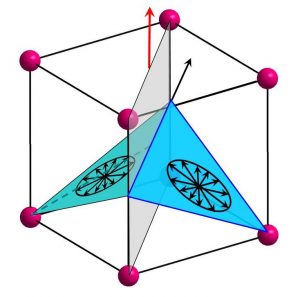Delphine Lebeugle, Dorothée Colson, Anne Forget, Michel Viret (IRAMIS/SPEC CEA-Saclay)
Arsen Goukassov, Alexandre Bataille (IRAMIS/LLB CEA-Saclay)
Magnetic materials are heavily used in the dynamic storage of information (hard disk drive, head for reading). For these applications, they are most often designed in the form of thin films. This was achieved after the birth of the spin electronics or “spintronics” and the discovery of the giant magnetoresistance. More recently, a new research topic has opened about multiferroic materials in which magnetic and ferroelectric order coexist, both aspects being coupled. With these materials, the processing of information in RAM memories could be achieved through the magnetic and electric polarization (modifying or measuring the local magnetization by applying an electric field, or the local electric polarization with a magnetic field). However, fundamental research remains to be done for understanding the nature of the interactions and mechanisms responsible for the coupling between the two types of order. It is in this context, that recent results were obtained in IRAMIS/SPEC showing that an electric field may influence the magnetism in the BiFeO3 compound.
Potential applications require high-purity, high resistivity multiferroic compounds, with coupled magnetic and electrical order and the highest possible temperatures of order-disorder transitions (magnetic and electric). In that way, the BiFeO3 compound appears highly interesting because it is the only multiferroic oxide with transition temperatures well above room temperature. It was therefore very studied experimentally during the past three years.
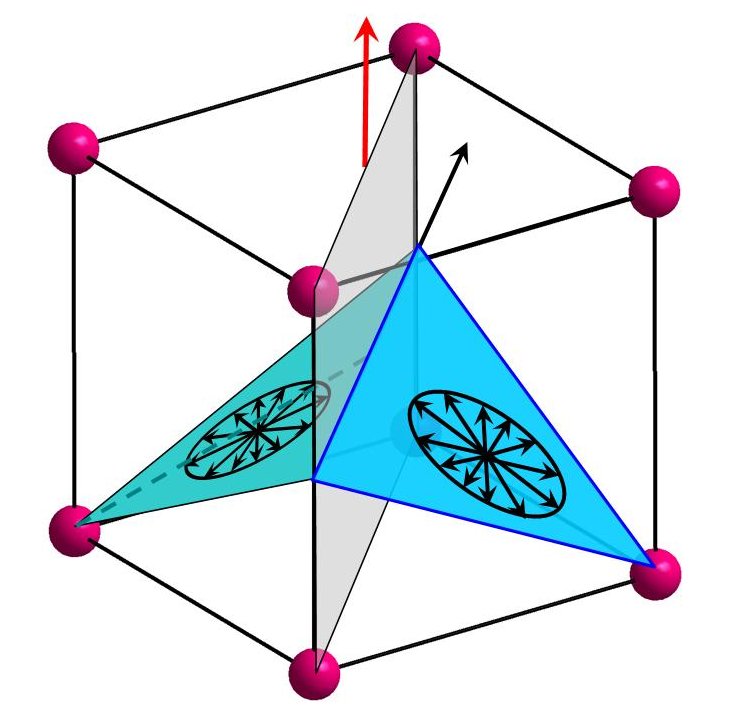
In this context, researchers at the Department of Laboratory of Condensed Matter Physics (IRAMIS/SPEC), in collaboration with the Laboratoire Léon Brillouin (LLB), have studied the BiFeO3 compound synthesized in the form of highly clean and resistive single crystal (Figure 1). The detailed study required the use of several techniques: X-ray diffraction, the answer ferroelectric (polarization cycles), optical imaging with polarized light, magnetic measurements by magnetometry Squid, Mössbauer spectroscopy and neutron diffraction at the “Orphée” reactor.
As for the structure, recent measurements on a single BiFeO3 crystal with the “Super-6T2” diffractometer at LLB-Saclay are compatible with the earlier data obtained powder in the 80’s by a Polish team showing that Fe3+ ions are antiferromagnetically ordered (G-type structure) and their magnetic moments describe a cycloid. The period measured is 64 nm (Fig.2). The present study of a single crystal sample allows to determine unambiguously the exact nature of the periodic structure at room temperature (cycloid, circular, elliptical or wave spin density) for the cycloid circular.
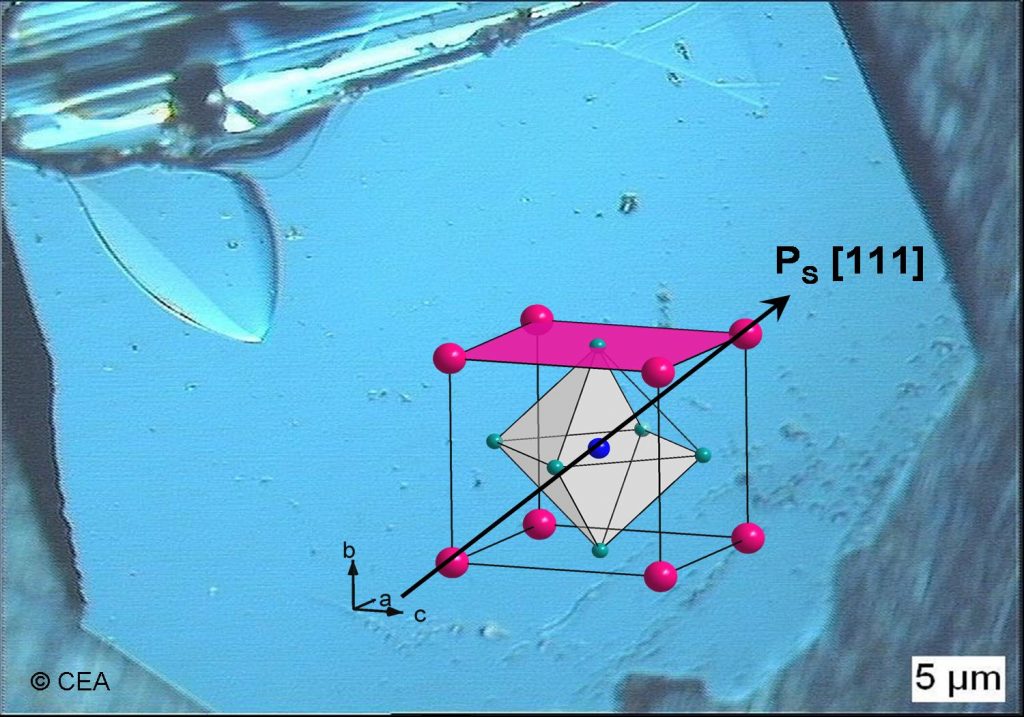
As for its properties, the quality of the single crystal allows measuring an intrinsic polarization of BiFeO3 at ambient temperature of 100µC/cm2, making this compound with the highest ferroectric polarization (above other technologically important compounds like BaTiO3 or PZT)
Finally, it was possible to measure, for the first time in a single multiferroic single crystal, the effect of the electric field on the magnetic order. The result shows that the application of an electric field causes a significant change in the distribution of ferroelectric, ferroelastic and antiferromagnetic domains at room temperature [1]. For instance, the rollover by 71° of the electric polarization at the reversal of the sample electric field induces a rollover of the rotation plane of the antiferromagnetic moments making the cycloid (Figure 3). These measures represent the first evidence of a strong coupling between ferroelectric and magnetic fields in the massive multiferroic BiFeO3 compound.
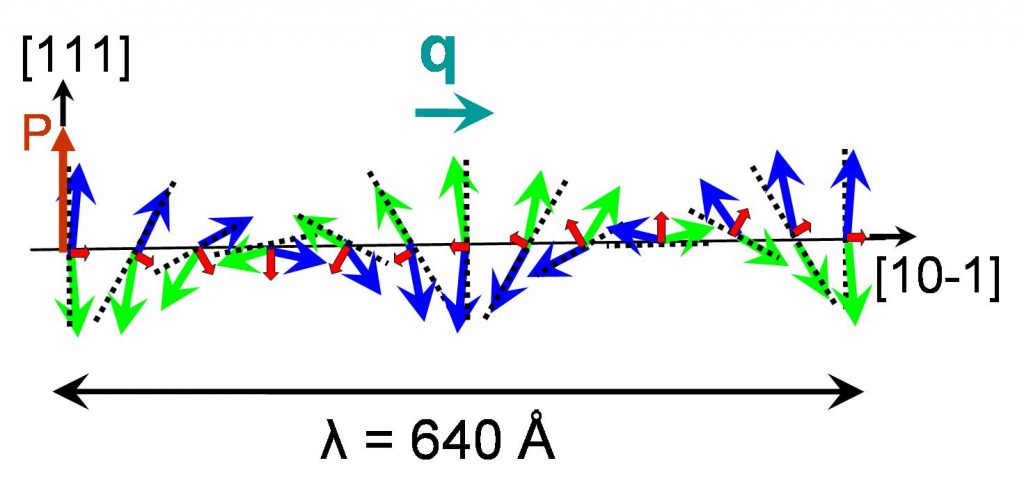
This study shows that an electric field is able to influence the magnetism of BiFeO3 and opens the door to the realization of a device able to switch a thin layer deposited on a magnetic crystal, and coupled with “coupling” exchange. The demonstration of such an effect could lead to the realization of a memory magnetically read and write by an electric field, thus combining the advantages of both effects. For technological applications, the implementation of this compound will be in the form of thin films: this would make profit of the excellent knowledge gained today for making deposits oxides in thin layers. In addition, the deformation of the layer under the influence of the substrate (epitaxial deformation) is one way of improving the electrical and magnetic properties of BiFeO3. However, it is essential to have a good knowledge of the massive compounds and the results presented here shed light on an “old” material whose properties were still poorly understood.
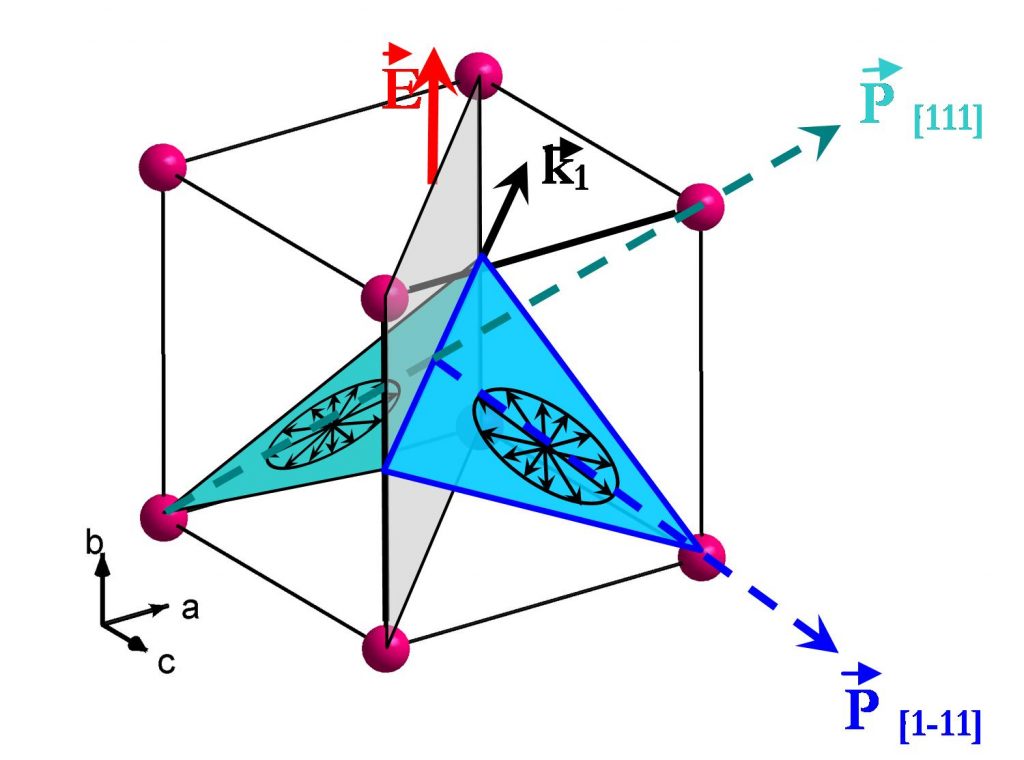
References :
[1]. Electric-field-induced spin-flop in BiFeO3 single crystals at room-temperature
D. Lebeugle, D. Colson, A. Forget, M. Viret, A.Bataille, A. Goukassov, accepted in Phys Rev Lett.
arXiv:0802.2915
[2] Room temperature coexistence of large electric polarization and magnetic order in BiFeO3 single crystals
D. Lebeugle, D. Colson, A. Forget, M. Viret, P. Bonville, J-F Marucco, S. Fusil, Phys. Rev. B 76, 024116 (2007).
[3] Very large spontaneous polarization in BiFeO3 single crystals at room temperature and its evolution under cycling field
D. Lebeugle, D. Colson, A. Forget, M. Viret, Appl. Physics Lett. 91 22907 (2007).
See also the 2007 highlight of IRAMIS/LLB :
“When magnetic and electric properties meet: multi-ferroïc materials“.




